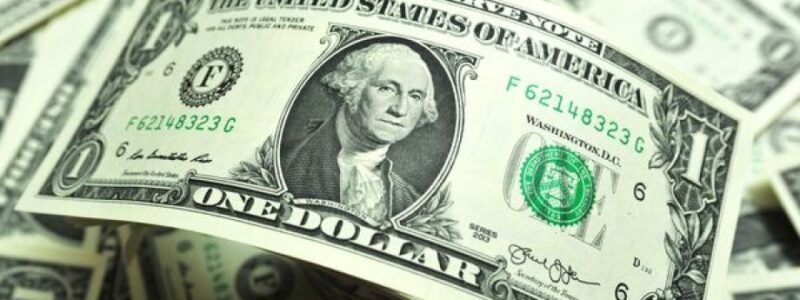
The U.S. dollar is strengthening against the euro, yen and pound sterling in trading on Tuesday after falling sharply the day before due to rising expectations that the Federal Reserve (Fed) will stop the cycle of raising the benchmark interest rate because of problems in the U.S. banking sector.
The futures market estimates less than 50% chance of Fed rate hike by 25 basis points (bps) at the March meeting, although last week traders considered the most likely scenario of rate hike at once by 50 bps, notes Bloomberg.
On Tuesday, traders’ attention is directed to the data on the dynamics of consumer prices in the U.S. for February, which is important for the Fed’s decision on the further rate level.
According to the experts’ consensus forecast, which is quoted by Trading Economics, inflation in the U.S. slowed down to 6% on an annualized basis last month from 6.4% a month earlier. Core inflation, which excludes food and energy costs, is expected to weaken to 5.5% from 5.6% in January.
The ICE-calculated index showing the dollar’s performance against six currencies (euro, Swiss franc, yen, Canadian dollar, pound sterling and Swedish krona) added 0.28% in trading, while the broader WSJ Dollar Index gained 0.23%.
The euro/dollar pair is trading at $1.0707 as of 8:10 a.m., up from $1.0734 at Monday’s market close.
The pound/dollar exchange rate is down to $1.2163 from $1.2184 the day before.
The value of the American currency in pair with the yen rose to 133.86 yen against 133.21 yen at the end of the previous session.
Yields on government bonds in Japan fell to a several-month low during Tuesday’s trading. Thus, the yield on 10-year government bonds fell to 0.24%, which is below the upper bound of the interest rate fluctuation corridor that was in effect until last December, when the Bank of Japan unexpectedly widened it to plus/minus 0.5%.
The dollar was down 0.9% against the euro, 1.2% against the pound and 1.3% against the yen on Monday.